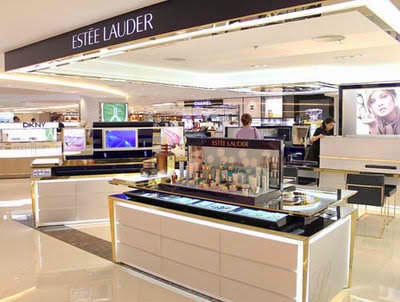MEXICO CITY, Mexico – Estée Lauder Cos.’ expansion practices are marked by entering emerging markets ahead of other companies despite the increased risk, according to the “Building Empire” session May 13 at the FT Business of Luxury Summit.
Estee Lauder’s Pure Color Envy lipsticks | Image source: luxurydaily.com
Understanding risk tolerance is a must when embarking on any new project, especially when setting up shop in marketplace that is still developing. As one of the world’s most valuable brands, Estée Lauder strives to introduce its products ahead of competitors to better understand emerging markets.
“Beauty is the entry point of luxury in every circumstance,” said William P. Lauder, executive chairman of Estée Lauder Cos., New York.
“Our brands are global,” he said. “But our consumers are global, too.
“We look to gateway cities around the world that represent the best of what our brand has to offer. These are cities such as Paris, London, New York and maybe even Hong Kong now.”
Boundless beauty
Estée Lauder, founded by Mr. Lauder’s parents in 1948, set the pace for establishing a presence in emerging markets.
When the brand was launched after the Second World War, the United States was essentially an emerging market that had rapidly evolved from an post-agricultural, industrial society to what we see today.
As the U.S. grew, so did Estée Lauder. By 1960, the brand entered the United Kingdom, Japan in 1966 and Mexico in 1970.
Mr. Lauder explained that this business model has allowed Estée Lauder to scale to where it is today.
Estée Lauder‘s summer 2014 Bronze Goddess collection | Image source: luxurydaily.com
When entering a market that other brands may have been hesitant to enter, Estée Lauder looks to inspire the rising middle class woman to treat herself well. Compared to other luxury categories, beauty products are more accessible.
The cosmetics brand has steadily followed the rise of the middle class consumer.
For instance, in 1989, after the collapse of the U.S.S.R, Estée Lauder was the first Western brand available for purchase in Russian rubles.
To get a sense of Estée Lauder’s success in emerging markets, Mr. Lauder said that in 1996, 60 percent of sales were from North America comprising Canada and the U.S. Today, in comparison, 70 percent of sales come from outside North America.
An Estée Lauder beauty counter | Image source: luxurydaily.com
This has been accomplished by matching Estée Lauder brands to the local market place. Estée Lauder evaluates how and where the consumer prefers to shop and travel to determine the best retail strategy.
For instance, Estée Lauder’s M.A.C brand is one of its most successful in emerging marketplaces. The brand is especially popular in Brazil where there are M.A.C boutiques, but the bricks-and-mortar location in New York’s Times Square has a consumer base that is 40 percent Brazilian.
To better serve these consumers – who are mostly tourists – at this location, as well as shops in Miami, Estée Lauder hires Portuguese-speaking sales associates to work at the store.
This is similar to Australian locations, where M.A.C products sell better if there is a Mandarin-speaking sales associate to accommodate the high number of Chinese travelers.
In China, there is no true domestic beauty brand, thus imports are stronger and more popular.
Estée Lauder aims its business at the top 10-15 percent of Chinese consumers, a group roughly larger than its European base.
By entering the marketplace earlier than others in 1993, Estée Lauder secured a relationship with Chinese consumers. As the middle class grew and women began having more disposable income, Estée Lauder saw its return on investment.
Estée Lauder‘s Chinese Web site | Image source: luxurydaily.com
Interestingly, Estée Lauder’s fourth-best selling store is a Macy’s, located in New York’s Flushing, Queens, neighborhood.
Dubbed as “Little Hong Kong,” by Mr. Lauder, the residents of the neighborhood look to Macy’s beauty counter to purchase Estée Lauder products to ship to relatives and friends in China to avoid the high import duties.
This demographic is not consistent in every region.
For example, in London’s Knightsbridge neighborhood, Estée Lauder sees a high percentage of Middle Eastern consumers during the summer months, but this has started to be disrupted.
Estée Lauder counters at retailers such as Harrods and Selfridges have seen a rise in Nigerian consumers. Harrods lists Nigerian consumers among the department store’s top 10 spenders.
Mr. Lauder stated that Estée Lauder is beginning to invest in Sub-Sahara Africa in countries such as Kenya and Nigeria. This region of the world, due to its high concentration of wealth from the oil industry, is the next frontier for the beauty marketer with bricks-and-mortar boutiques slotted for Lagos.
Digital beauty
While Estée Lauder prides itself on its aspirational model and high price points, it has also been able to interact with the consumer where she wishes to shop, which is increasingly online.
Lancôme Paris, Kiehl’s and L’Oréal Paris clinched the top three spots in L2 Think Tank’s “Digital IQ Index: Beauty 2013″ study as competition escalates on a variety of fronts. Although L’Oréal Group grabbed the top three finish, Estée Lauder had five brands in the top ten and the highest average digital IQ for its 11 brands at 119 (see story).
Mr. Lauder explained that the brand now tests the water using ecommerce. He also noted that since ecommerce was launched in 1997, the brand sees more click-throughs for the store locator than shopping carts.
This shows the fundamental change in consumer behavior, but also supports Estée Lauder’s success at creating a model conducive to how enthusiasts wish to shop.
“In our industry, most of our competitors are similar in capital,” Mr. Lauder said.
“[Estée Lauder] is more patient,” he said. “We’ve seen a nice return by being patient and entrepreneurial.”
William Lauder’s vision for Estee Lauder Companies solidifies further the company's leadership in the beauty market. Follow this Facebook page to learn more about ELC's upcoming business ventures.



